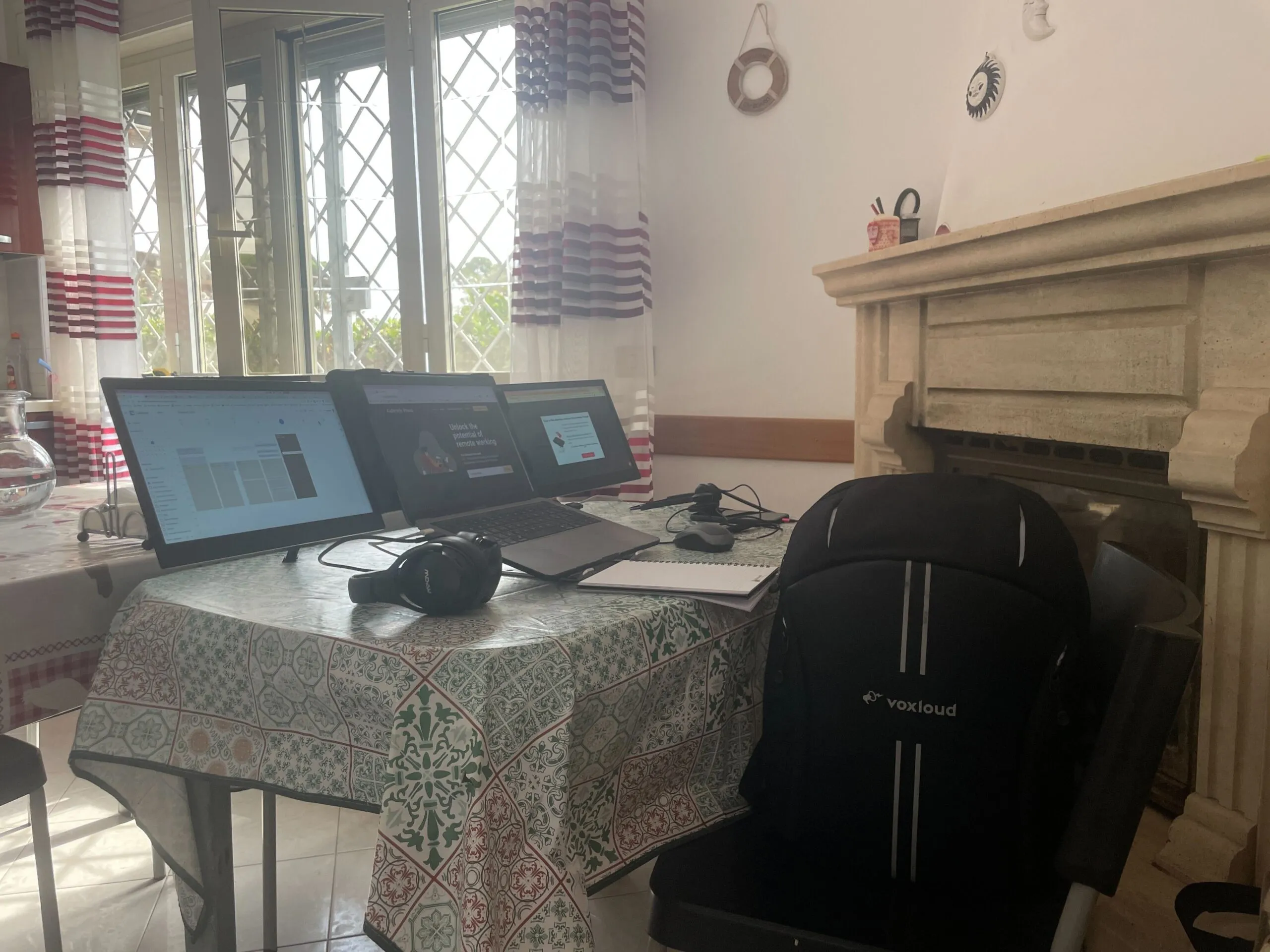Today, I want to share a remote work routine that works.
This Thursday, I held a workshop about how Voxloud works remotely.
My audience was Italian entrepreneurs (students of the Imprendilife Millionaire Mastermind).
It was a wonderful experience: having such an interactive audience is not so common. I got over 45 minutes of questions compared to a total timeslot of an hour and a half 😮.
There were entrepreneurs from different sectors, ages, and ways of working.
Almost all had the following concern:
“Remote Work is ideally beautiful, but real life is a mess.
Working from home is very difficult. Almost impossible!
Distractions and external interruptions make me hate working from home.
Every time I try, I want to return to the office immediately.
How can I do?”

A remote work routine that works
Before going ahead, I want to clarify one important concept:
Remote work > Home Work
If you are not satisfied with working from home, do not think that Remote Work is not for you.
Remote work means:
Work by always considering that you are not face-to-face with your colleagues.
In any case, we can’t ignore the comfort (or discomfort) of performing Remote Work from home. 84% of remote workers work from their homes (source: State of Remote Work).
This results in remote workers’ most significant struggles:
- Being focused
- Avoiding interruptions
- Unplugging after work
Achieving an effective and satisfying routine is a matter of testing and consistency.
After ten years of practice, these are the 5 points that I think are crucial to building a work-from-home routine that works.
1) Setup your working station(s) properly
“Properly” is a vast concept because it varies from person to person.
Wherever I go, my work setup to feel “powerful” is composed by:
- 3 x Monitors
- 1 x Mouse (I get crazy about using the trackpad)
- 2 x headsets (1 x wireless, 1 x wired as backup),
- Paper and Pen (to take notes or draw, it helps me a lot)
Whether I am at home or traveling, I always need such equipment.
I am writing this issue from an Airbnb next to the sea.
Below is how I set up the working station for this month:

On average, the below tips can work for every one of us:
- If you can, use a dedicated room.
- If you can’t have a dedicated space, create an “office corner”.
- If you can’t make a corner, work from a co-working or the office.
- Try not to work in the same areas where you usually spend your free time.
2) Kill distractions
Two types of distractions can take you away from the activity you need to do with focus:
- Working distractions:
a message from a colleague, an unplanned meeting, or a more fun task than what you have to do now. - Personal life distractions:
the fridge, a son/daughter looking for you to play with, or a phone call from a friend.
An adequate working station setup kills physical distractions.
To kill the others, you need something more:
- Enable Do Not Disturb mode on your phone:
Stop being interrupted by notifications. - Mute your laptop to shut down all notifications.
- Remove Social media Apps from your phone:
I know it’s a drastic measure.
But if the first two tips are not enough, go for it.
3) Group similar tasks together
Concentration does not turn on like a switch, but we conquer it progressively.
We need time to get focused, time to stay focused, and time to rest.
Our minds work this way, and you can’t do anything to change it.
Knowing this, if you don’t organize yourself well during the day and jump from one context to another.. what happens?
The time needed to focus becomes longer and longer, and you will become increasingly tired.
As an example, I currently grouped my activities into two blocks:
- Interactions with others:
calls, emails, and comments on tickets.
Whatever requires interaction with someone is done in the late morning. - Focused work:
Writing, Documentation, Analysis, Troubleshooting.
Whatever “execution” task is done in the afternoon.
One important thing to consider:
The more your colleagues organize their work similarly, the more chances you have to maintain your groups.
Grouping tasks is the activity with the highest impact on focus.
I advise you to work on it right away.
4) Create morning and evening routines
As remote workers, commuting is often only a couple of steps from bedroom to office.
There’s no travel time to signal to the brain that work is beginning and ending.
That means it can sometimes be hard to get into “work mode” for the day and out of it at the end of the day.
Morning and evening routines tell your brain when it’s time to start working and when it’s time to finish.
Example of a morning routine:
- Wake up after at least 8 hours of sleep
- Walk your dog
- Have breakfast (while catching up on notifications)
- Start work
Example of an evening routine:
- Stop working, depending on your calendar
- Walk the dog with your wife and catch up on our days
- Have dinner
- After dinner: Reading time
5) Review your calendar every month
Don’t mistake setting up your calendar the first time, and never adjust it again.
Review once a month your calendar.
Check if you can group more activities or change the execution timeslot.
About the Newsletter
1 actionable tip on remote management in your inbox every Saturday morning.
Subscribe